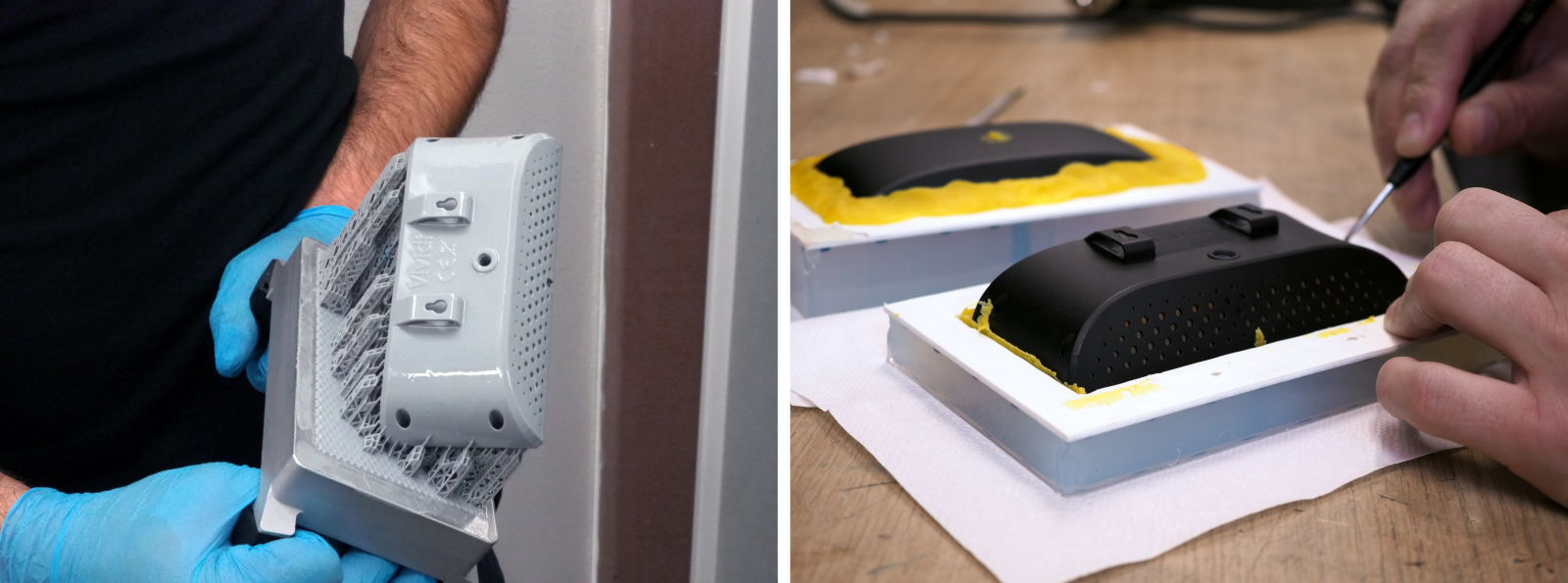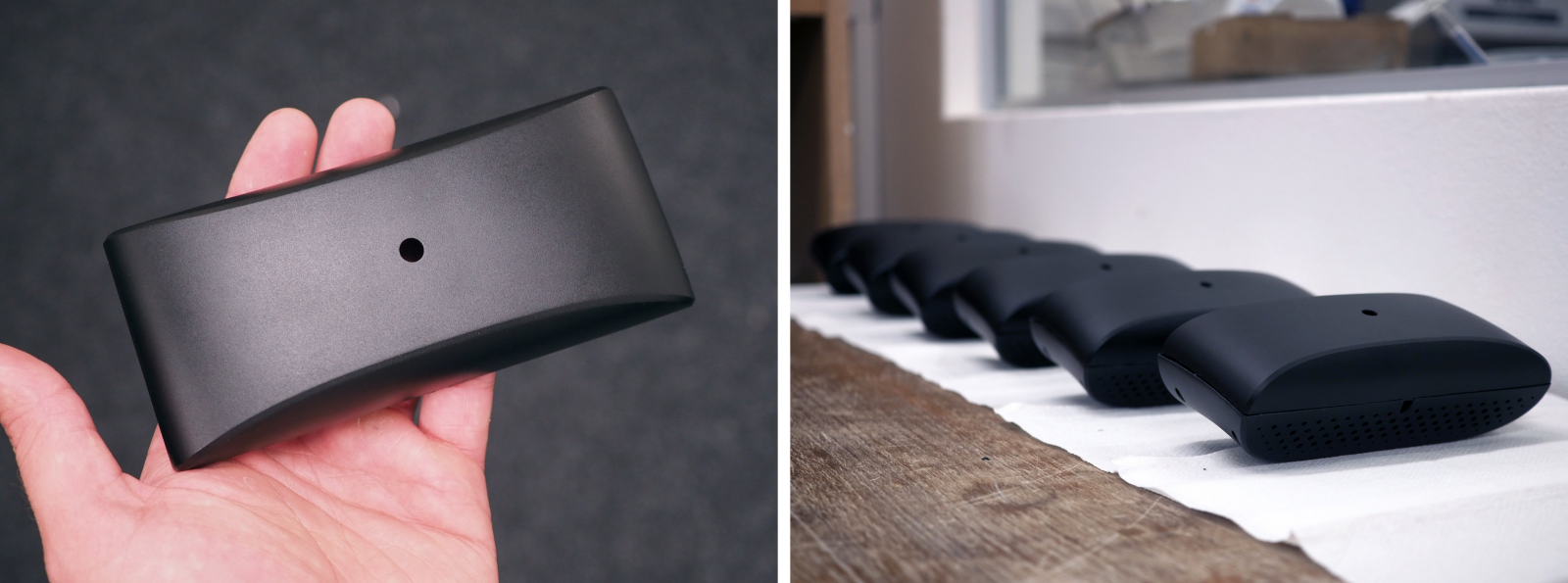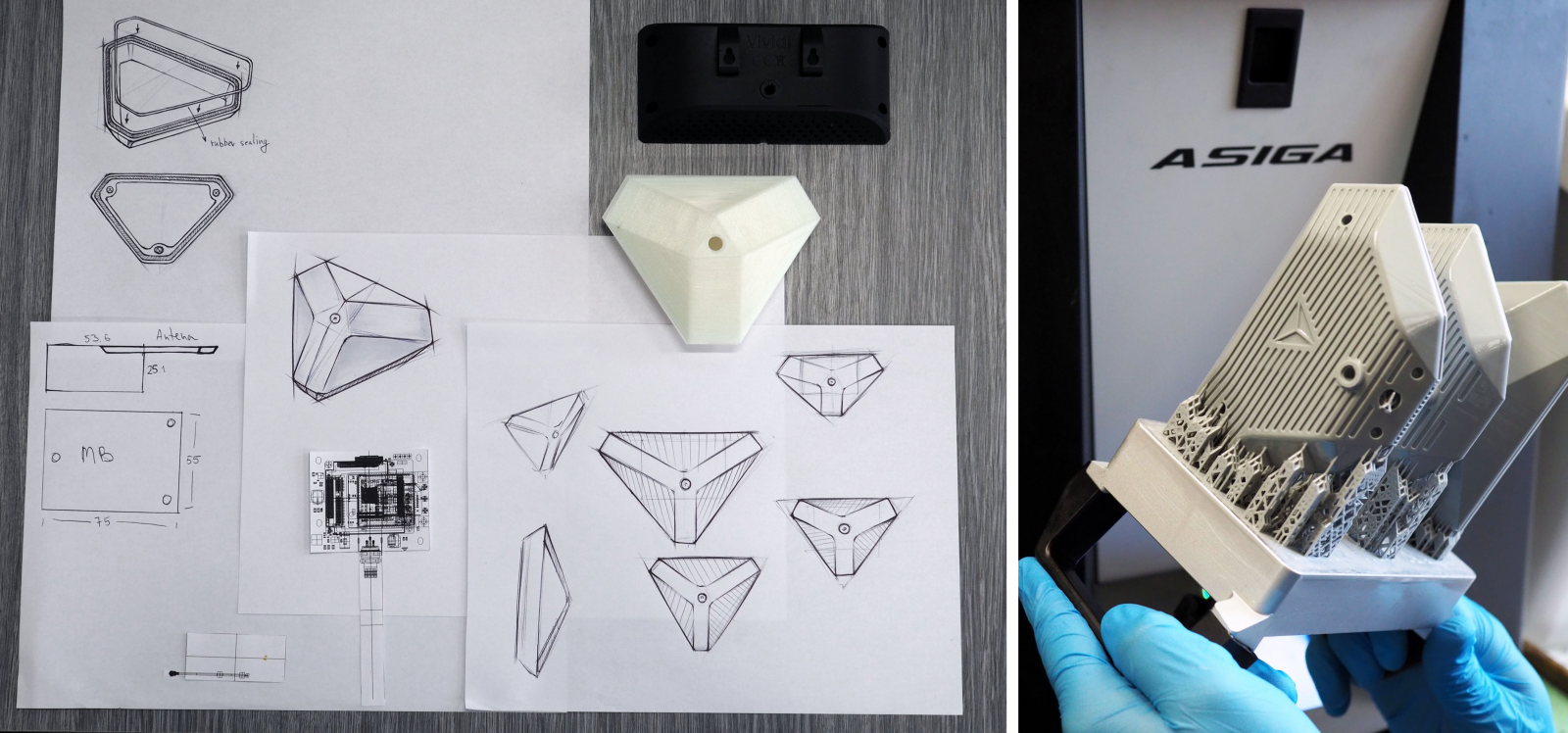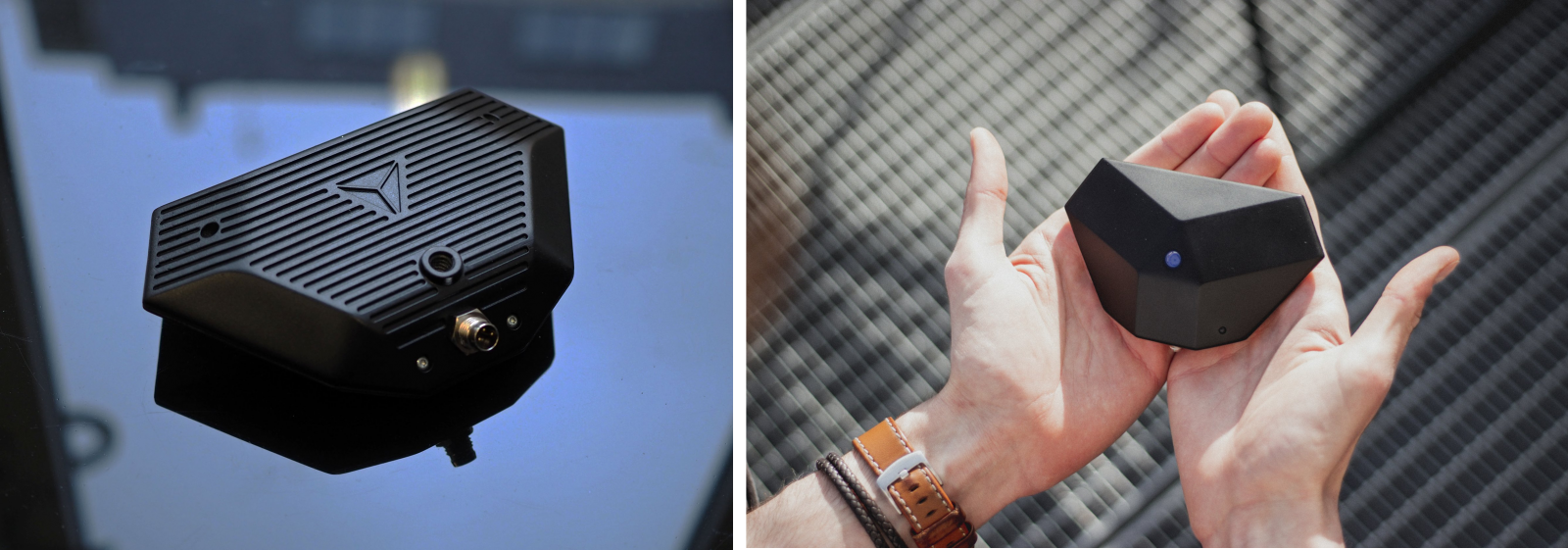Iterait a.s. specializes in the development of advanced AI solutions in the field of computer vision. Their technologies help companies streamline operations, reduce costs, and automate routine tasks across industries such as retail, healthcare, and transportation. Iterait approached cotu® with the goal of designing and manufacturing an enclosure for a device intended to analyze customer behavior in physical retail spaces. The enclosure needed to combine cutting-edge electronics with a discreet, functional, and reliable design.
The collaboration resulted in the development of two generations of the Vividi device. Each brought new technical challenges and clearly demonstrated the importance of combining design, mechanical engineering, and production know-how into a single, cohesive solution.
This case study outlines how cotu® approaches technically demanding projects at every stage of development. The process includes product design and engineering, functional prototyping, and small-batch production. Emphasis is placed on the use of modern technologies that enable high precision, time efficiency, and production flexibility.
The aim of the project was to develop a compact and technically reliable device that allows businesses to monitor and analyze customer movement within their premises. The challenge lay in delivering both a functional design and a cost-effective, fast small-scale production solution.
cotu®’s approach to solving this challenge
Technology used: Asiga Pro 4K
Material used: Asiga PlasGRAY, vacuum-cast polyurethane
First Generation of Vividi: From Idea to Implementation
The first generation of Vividi was designed to be discreet, easy to install, and durable enough for daily use in public environments. The cotu® development team carefully evaluated all technical and aesthetic requirements, including mounting methods, internal electronics layout, and overall visual simplicity.
Design Concept and Prototyping
Based on the initial requirements, several design variants were developed. These concepts explored different mounting options, ventilation types, and shape configurations. After consultations with both the client and the mechanical engineer, the selected designs were translated into 3D models. The physical proportions were then verified using an SLA 3D-printed prototype.

Engineering and Production Preparation
After the prototype was approved, the team proceeded with detailed 3D modeling in Rhinoceros 3D, while technical components were refined in SolidWorks. At this stage, the design was optimized for production. This included adjustments to parting lines, wall thicknesses, and internal geometry.
Manufacturing and Finalizatio
The final master model was printed using the Asiga PRO 4K printer, whose precision significantly reduced the need for post-processing and shortened the time between design and physical output. Silicone molds were then created, and within two days the first polyurethane cast was produced for dimensional and visual quality control. Following validation, small-batch production of 100 units commenced.
Thanks to the speed and flexibility of 3D printing, the entire process—from initial design to delivery of the finished units—was completed within two months.

Second Generation of Vividi: More Compact, More Durable, More Demanding
The second generation represented a significant leap in both design complexity and technical requirements. The updated specifications included a smaller footprint, enhanced durability, IP68 water resistance, improved heat dissipation, an integrated logo, and a light guide for LED signaling.
Redesign and Electronics Optimization
This phase required more than just cosmetic updates. It called for a complete rethinking of the device’s internal layout and material selection. The cotu® design team created three distinct design directions. The final version integrated the triangular element from the client's logo directly into the housing. At the same time, the internal electronics layout was optimized, allowing the overall size of the device to be significantly reduced without compromising functionality.

Material Selection and Structural Optimization
During development, it was necessary to evaluate materials for mechanical strength and thermal resistance. Various combinations of aluminum-filled plastic were tested. The best-performing solution featured a cast aluminum back and a plastic front cover, offering the required stiffness and thermal stability. The initial production batch revealed tolerance mismatches in the aluminum castings, which made adjustments to the front component necessary. These changes were quickly implemented using vacuum casting within just a few days and without increased production costs.

Ensuring Water Resistance
High water resistance was also a key requirement. The cotu® team conducted a series of tests to evaluate different sealing solutions. After several failed iterations, a specialized Czech supplier was selected to produce a custom gasket. This solution successfully achieved the required protection level without additional design changes.
Controlled Small-Batch Production
Once the prototype was approved, master models with final surface finishes were produced. The team proceeded with vacuum casting, enabling fast and reliable low-volume manufacturing. Thanks to an efficient workflow, cotu® was able to produce up to 100 units per week.
Today, a project of this nature would be executed using direct 3D printing with Loctite IND405, a biocompatible and highly durable material with mechanical properties similar to PA12, commonly used in SLS and MJF technologies. By eliminating vacuum casting and utilizing additive manufacturing, the overall lead time could be reduced by one to two weeks, not only due to faster production but also due to reduced labor requirements. This approach would also lower the cost per unit, making the project more economically efficient.

Summary and Added Value
The collaboration between Iterait and cotu® demonstrates how additive manufacturing, engineering expertise, and rapid iteration can turn a complex product idea into a fully functional, real-world solution in just a few weeks. cotu® served as a technical partner—not just a production supplier—actively contributing to product optimization at every stage.
Do you have a product idea? cotu® can bring it to life
If you are looking for a partner who can help you design a functional and visually refined solution, develop and validate prototypes, or manage cost-efficient small-batch production, cotu® is here to support you. With a combination of technical precision, modern manufacturing, and a professional approach, we’ll help you turn your concept into reality—quickly and with confidence.


